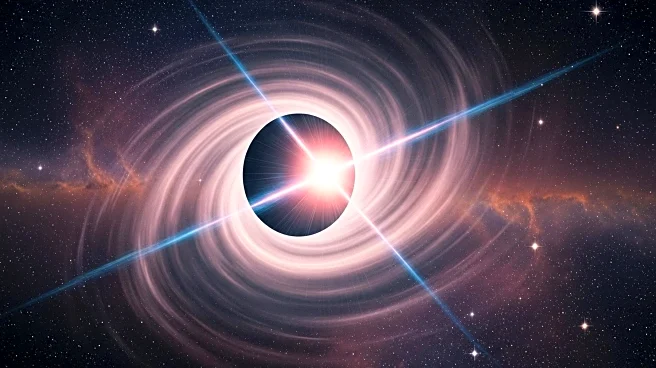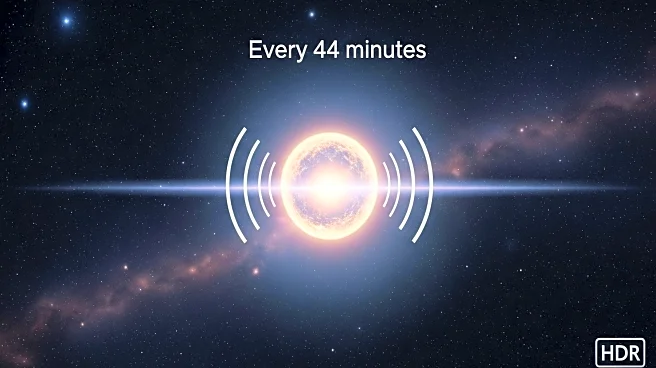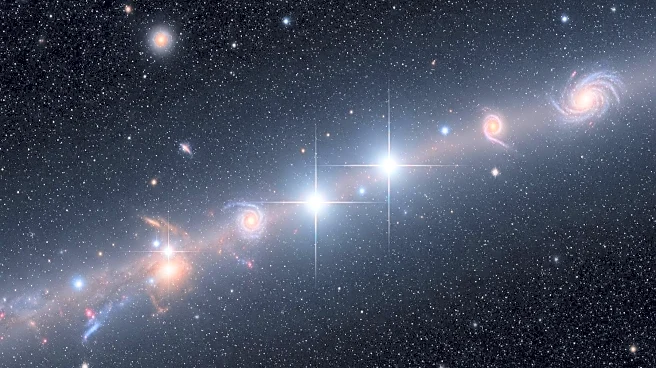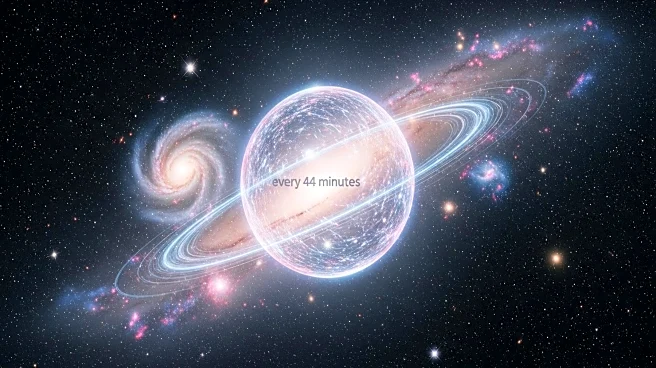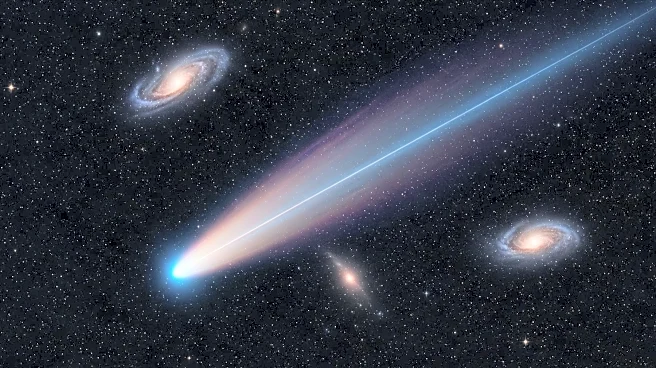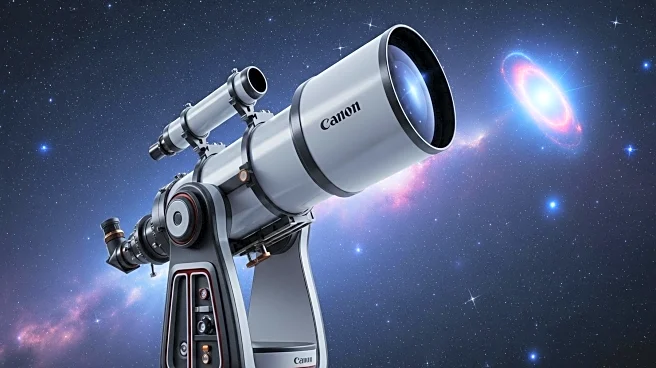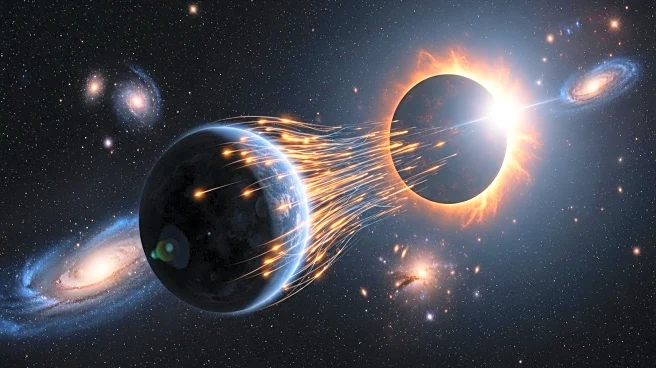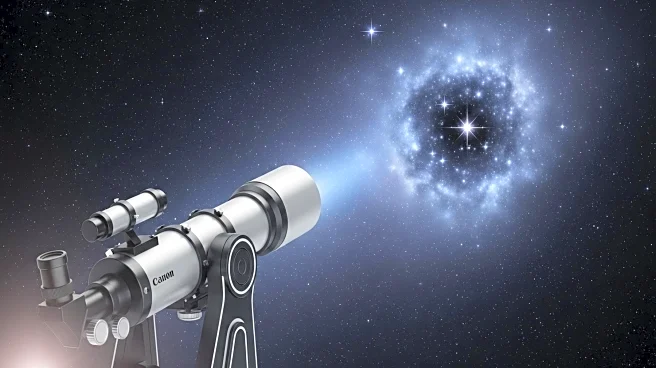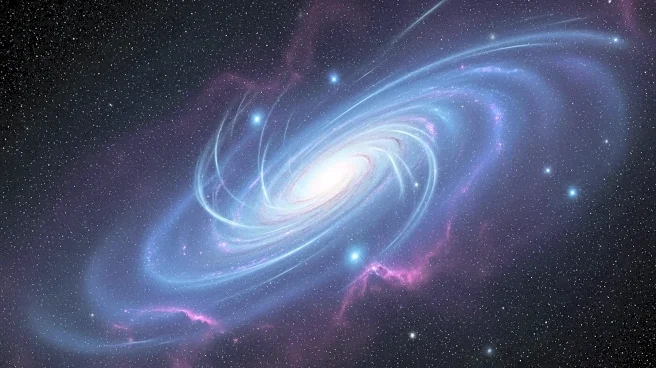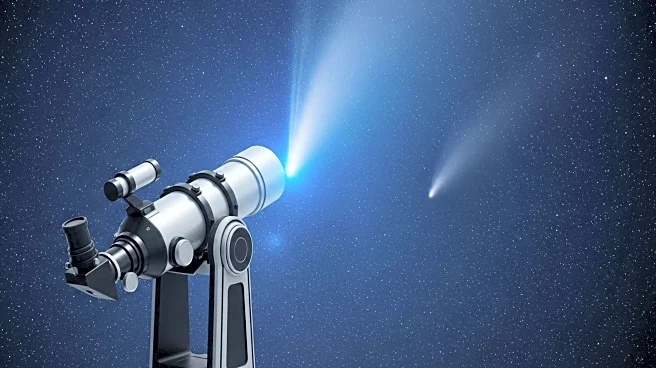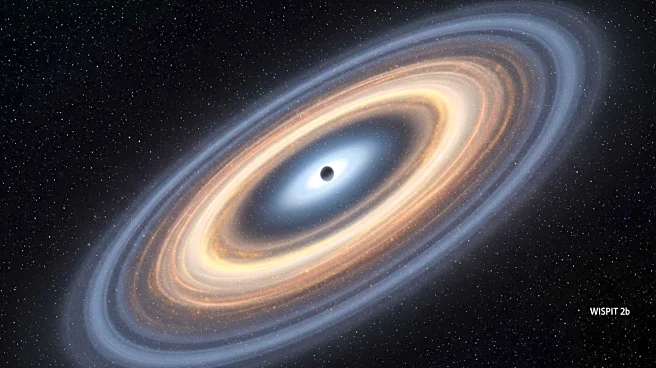What's Happening?
A black hole has been observed consuming a star from the inside, producing an exceptionally long gamma-ray burst, GRB 250702B, lasting about 7 hours. Detected by NASA's Fermi Gamma-ray Space Telescope, this event challenges typical gamma-ray burst models, which usually last only a few minutes. Researchers at NASA's Goddard Space Flight Centre propose that a pre-existing black hole fell into a companion star, consuming it from within and generating powerful jets. This rare occurrence provides new insights into the interactions between black holes and stars.
Why It's Important?
The discovery of GRB 250702B offers a unique opportunity to study the dynamics of black holes and their interactions with stars. Understanding these processes is crucial for astrophysics, as it sheds light on the behavior of black holes and the mechanisms behind gamma-ray bursts. This event could lead to advancements in modeling stellar evolution and the lifecycle of black holes. Additionally, it highlights the potential for unexpected astronomical phenomena, prompting further exploration of the universe's complexities.
What's Next?
Future observations with upcoming telescopes like the Vera Rubin Observatory may reveal more events similar to GRB 250702B, allowing scientists to refine models of black hole-star interactions. Researchers will continue to analyze data from this burst to better understand the conditions that lead to such long-lasting gamma-ray emissions. This could result in new theories about the formation and evolution of black holes and their impact on surrounding celestial bodies.
Beyond the Headlines
The study of GRB 250702B challenges existing theories about gamma-ray bursts and black hole behavior, suggesting that these phenomena may be more diverse than previously thought. It underscores the importance of continuous observation and exploration in astrophysics, as unexpected discoveries can reshape scientific understanding. This event may inspire new research into the interactions between black holes and stars, potentially leading to breakthroughs in the field.
